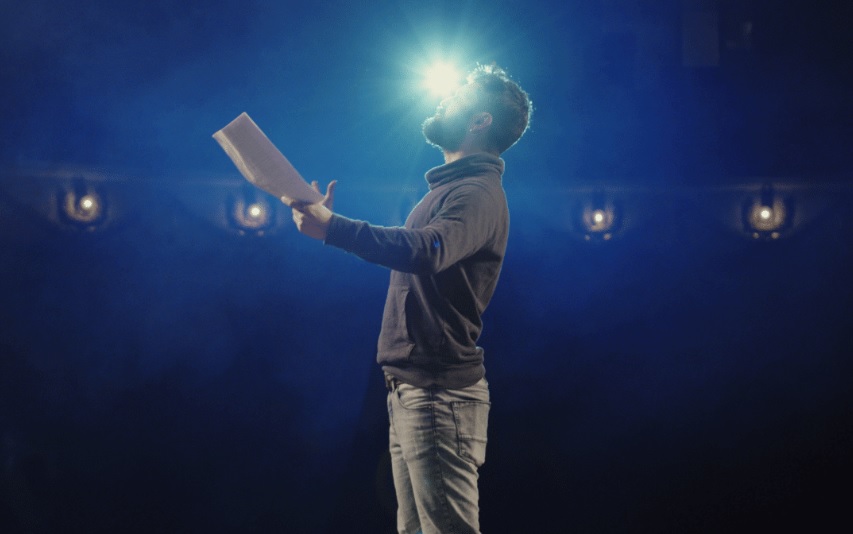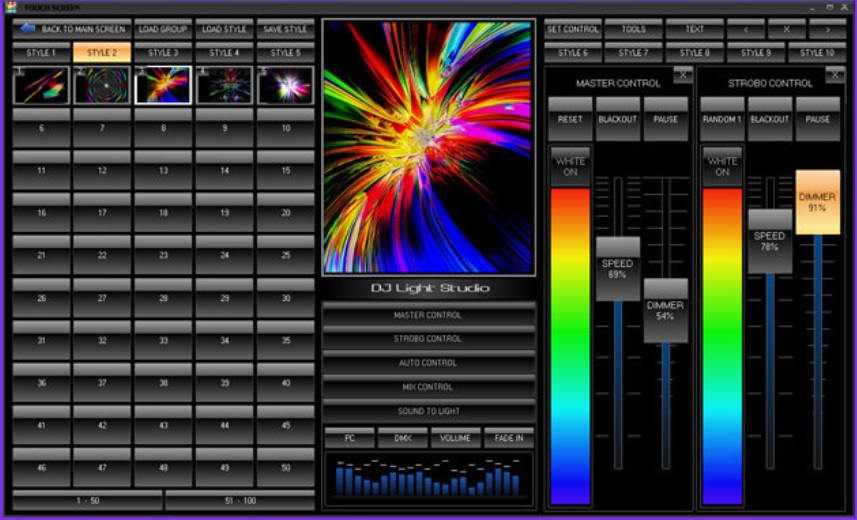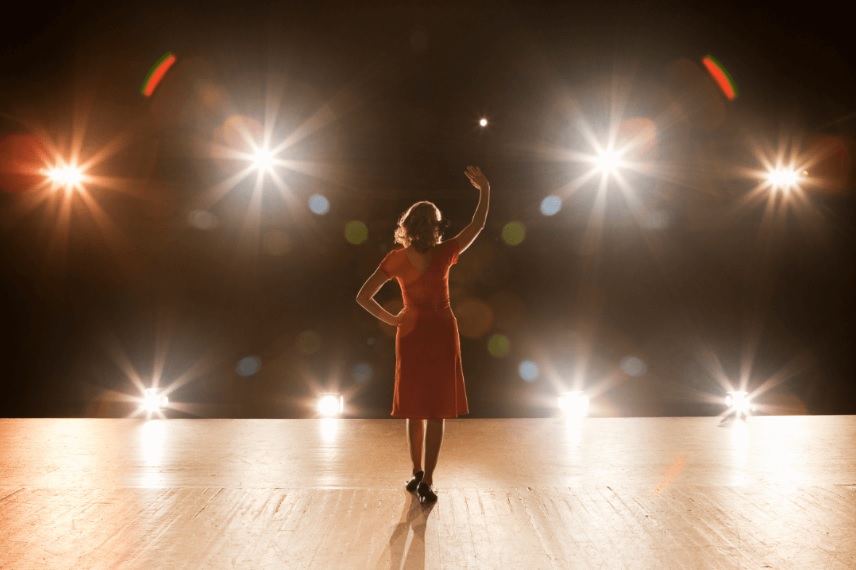Depending on your previous experience, you will likely have a preference for one type of DMX control over the other.

Becoming a lighting technician isn’t easy, but it isn’t impossible either! These days, it is easier than ever to learn the basics and start putting on some impressive light shows for your band, a traveling theater group, or even your church. When you begin learning how to control lights and create lighting landscapes for stage, the first device you’ll encounter is a DMX controller.
If you haven’t heard of a DMX controller before, then you’re in luck! We’re going to be going over the basics of lighting control for the stage and helping you decide whether a software or hardware DMX is right for you. So, if you are completely new and wondering what DMX lighting is, keep reading to find out!
Start With Your Goal
The first step to decide which type of DMX controller is to set goals for the type of lighting you want to create

Don’t waste time by getting the wrong type of controller for your needs.
If you’ve begun searching how to get started with lighting control and design, the amount of information is likely overwhelming. As a beginner, it is unlikely that you will need the most advanced lighting control technology in order to execute an impressive light show at a small scale.
That’s why it is important to set a goal so you know the type of lighting equipment you need versus equipment that is made for more advanced lighting technicians. To help you get started, we’ve come up with a few questions that you can ask yourself to get a better idea of the type of lighting control you need.
- Is the show music-based? Will the lights need to move on beat?
- How large is the stage?
- Is the show static or traveling?
- How many different types of lights do you need?
- How long is the show?
- What is your budget?
Once you have listed your answers to these questions, write down any other specific requirements you will need for your show. Some productions require other devices like fog machines to help the lights appear front and center. If your production requires additional devices or other special equipment or requirements, be sure to add them to the list. Once your list is complete, you can start deciding which type of DMX controller is right for your show.
How Do Hardware DMX Controllers Work
Hardware DMX systems are the more traditional of the two options and let users manually control lighting scenes

Hardware DMX systems are easier to use than they look.
There are two major types of DMX systems that are used to put on impressive light shows—hardware and software DMX. To get started, we’re going to be talking about the older and more popular of the two kinds of controllers—the hardware DMX. These consoles tend to look very similar to the type of equipment DJs use to control music. The only real difference here is instead of mixing songs together, technicians trigger and adjust different lights during a performance.
While these consoles may initially seem intimidating, they are actually pretty easy to get a hang of and can be used to produce simple lighting scenes. Using the fader, you can blend these scenes together to create seamless lighting for the performance. The hardware DMX is preferable for a lot of people because they prefer working with physical faders and dials as opposed to digital ones in a software program.
Another advantage of using a hardware DMX is that there is no room for bugs or crashes. Once your hardware controller is connected to the lights, there is nothing that will interrupt the connection or cause a delay in the next scene.
The one major drawback for a lot of hardware DMX systems is that there are only a set number of scenes that can be recorded and used later for performances. This is a big deal because lighting technicians use scenes to create intricate lighting environments that can be easily replicated over and over again. For one off shows this is no big deal, but for repeating or traveling shows it can cause issues.
If you are interested in creating, saving, and mixing scenes without a physical console, you might be better suited for a software-based DMX.
How Does a Software DMX Controller Work?
Software DMX systems are perfect for mixing multiple preset scenes and makes for easy travel

DMX controllers allow technicians to put on incredible light shows for productions big or small. Image courtesy of DMX-Software.com.
Software and hardware DMX systems work in the same way—they allow you to control lights on a stage by using scenes, controlling color and brightness, and even implementing fog machines and other auxiliary equipment. The main difference between the two is the way users interact with the controls. Unlike hardware where you have a physical console to operate, software can be downloaded and operated from any laptop.
If you are a part of a traveling show or you are being contracted for different types of shows, a software DMX is perfect for on the go. As we previously mentioned, software DMX systems are able to save and store different scenes that can be easily called upon during a performance.
For example, if you designed a lighting scene that was used to convey a somber moment in a performance, you can use that same scene again when the performance calls for “serious” lighting. As a beginner, keeping these tools easily accessible in your belt is important so that you can instantly pull up lighting scenes and blend them together.
The major downside of using a software DMX is not due to the DMX program, but the fact that it is a piece of software. Software is susceptible to crashes and bugs that can hinder preparation for a performance or even affect the performance in real time. To prevent this from happening, we recommend executing a lighting rehearsal before you are putting on the actual show.
That way, you can make sure that you aren’t overloading your computer or the software with commands during the show. Should there be any issues that pop up, you can address them during the rehearsal as opposed to during the actual show.
Which Type of DMX Controller is The Best Option?
It is up to you to decide which type of controller is best for your needs

Use the list you created to determine which type of controller is right for your production.
Remember the list you created of the requirements for your light show? Using that list and the information we’ve provided, you can choose which type of controller is best to put on your show. Of course, we recommend doing your research since not all controllers are created equally. So, we recommend shopping around until you’ve found a controller that suits all of your needs.
It is important to remember that while we are making distinctions between the two types of controllers, they are able to carry out all of the same functions. So, while you will know which type of controller you are using and why it works for you, the audience won’t be able to tell the difference. You should choose carefully, but ultimately the visual output will look the same.